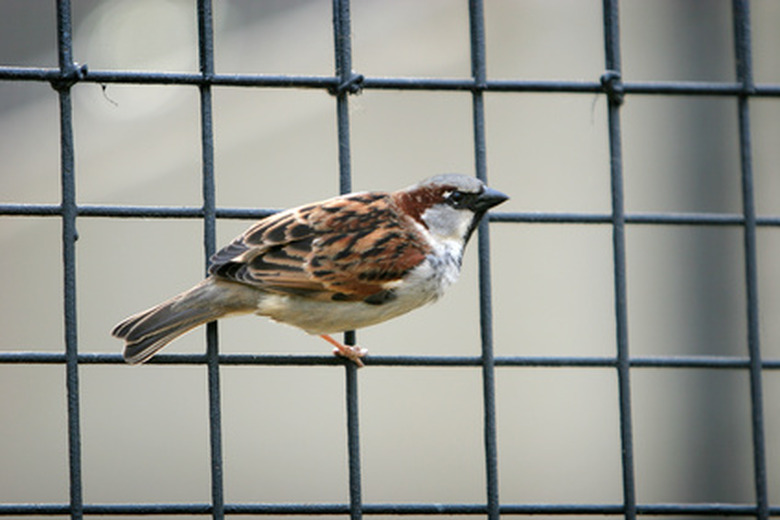Homemade Live Bird Trap Instructions
There are several types of traps designed to capture birds but the easiest to build and operate are rectangular or rounded wire cages fitted with funnel-shaped door openings. The wide part of the funnel is an easy-to-find opening for the birds–they pass through the small part of the funnel and into cage. Once the birds are inside, they tend to search for an escape route around the perimeter of the enclosure and seldom find the funnel opening from the inside.
Wire
Wire
The easiest material from which to construct the trap is either a wire mesh known as welded wire or poultry netting. The wire used to make welded wire is a much heavier gauge than poultry wire. It's self-supporting, more durable and available in mesh sizes from as small as 1/4-inch by a 1/4-inch to 4-inches square. Poultry netting is available in only a few mesh sizes and is generally affixed to a wooden or metal frame. Either will work. It's up to you to determine which will work best for your application, the expense and the ease of fabrication.
Choose a mesh size depending on the size of bird you plan to trap. Remember, a small mesh will hold birds of all sizes, while a large mesh can permit small birds to escape. That's not all bad. If you want to catch large birds, like pigeons, a large mesh wire will hold the pigeons while letting sparrows or other small birds go free.
Bird Size
Bird Size
Consider the size of the bird and the number of birds you hope to capture at once when building the trap. Make the trap about 1 ½ times taller than the height of the bird when standing upright. You want to pen them in, without making them hesitant about being penned in. Make the capture pen large enough to hold all the birds you expect to catch and more. A bird is unlikely to enter a trap already filled with birds. Two or three birds in a large trap serve as decoys; 20 birds in a small trap are deterrents.
Baited Traps
Baited Traps
Though birds can be caught in single-door traps, if you plan to trap birds which are attracted to bait–usually seeds or grain–install more than one funnel door on the perimeter of the cage to up the odds of the birds finding their way inside. Put a lot of bait inside the trap, sprinkling a few samples around the perimeter and in front of the doors. Pre-baiting a site for a few days before installing the trap can boost the catch.
Non-Baited Traps
Non-Baited Traps
Birds that spend most of their time on the ground and don't rely on readily available food, such as grain, can be caught in non-baited traps. Make a pair of wire cages as you would when constructing a baited trap, but with only one funnel door. Position the cages 10 to 20 yards apart in a suitable habitat. Then install a short, wire mesh fence between the traps with each end of the fence terminating just inside the funnel doors of one of the traps. The birds–accustomed to walking around obstructions–often follow along the fence looking for a way around it and walk right on into the catch enclosure.
References
Cite This Article
MLA
Schoonveld, Mike. "Homemade Live Bird Trap Instructions" sciencing.com, https://www.sciencing.com/homemade-live-bird-trap-instructions-6319787/. 22 November 2019.
APA
Schoonveld, Mike. (2019, November 22). Homemade Live Bird Trap Instructions. sciencing.com. Retrieved from https://www.sciencing.com/homemade-live-bird-trap-instructions-6319787/
Chicago
Schoonveld, Mike. Homemade Live Bird Trap Instructions last modified March 24, 2022. https://www.sciencing.com/homemade-live-bird-trap-instructions-6319787/
